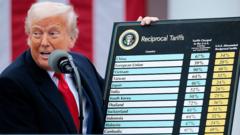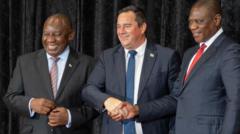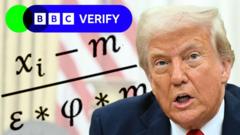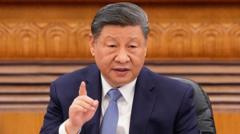On April 3, 2025, President Trump introduced a significant tariff strategy designed to alter trade dynamics, sparking debates on its potential benefits and drawbacks.
Trump Unveils New Tariff Strategy Aimed at Global Trade Reset

Trump Unveils New Tariff Strategy Aimed at Global Trade Reset
President Trump's recent announcement of sweeping tariffs aims to reshape America's trading landscape, but experts warn of potential economic repercussions.
In a pivotal economic policy development, President Trump unveiled a new tariff strategy on April 3, 2025, signalling one of the most fundamental shifts in U.S. trade policy in recent decades. The new measures aim to recalibrate America's trading relationships with the rest of the world, as the president argues they will rectify longstanding issues he perceives as unfair impositions on American exporters.
The recently announced tariffs are set to have broad implications, applying to a majority of U.S. imports but exempting goods sourced from Canada and Mexico. Trump characterized the tariffs as essential to ensuring fair treatment of American businesses, asserting, “The markets are going to boom and the country is going to boom.” However, this assertion came amid a tumultuous day for global financial markets, which experienced significant declines following his announcement.
Critics, including a wide range of economists, express concern over the potential economic fallout from the president's approach. Many experts predict that Trump's sweeping tariffs could decelerate U.S. economic growth, drive consumer costs higher, and complicate the operations of companies reliant on international supply chains. The tariffs consist of a standard “base line” levy of 10 percent on most imports, alongside a “reciprocal” tariff targeting 57 nations deemed to impose high tariffs on U.S. goods—essentially mirroring the unfavorable treatment experienced by American exporters.
As reactions to this new trade policy unfold, its long-term effects remain to be seen, with proponents lauding the potential job creation benefits, while detractors flag possible increased prices and market instability. The discourse surrounding these tariffs highlights differing perspectives on global trade relations and the future of U.S. economic policy.





















